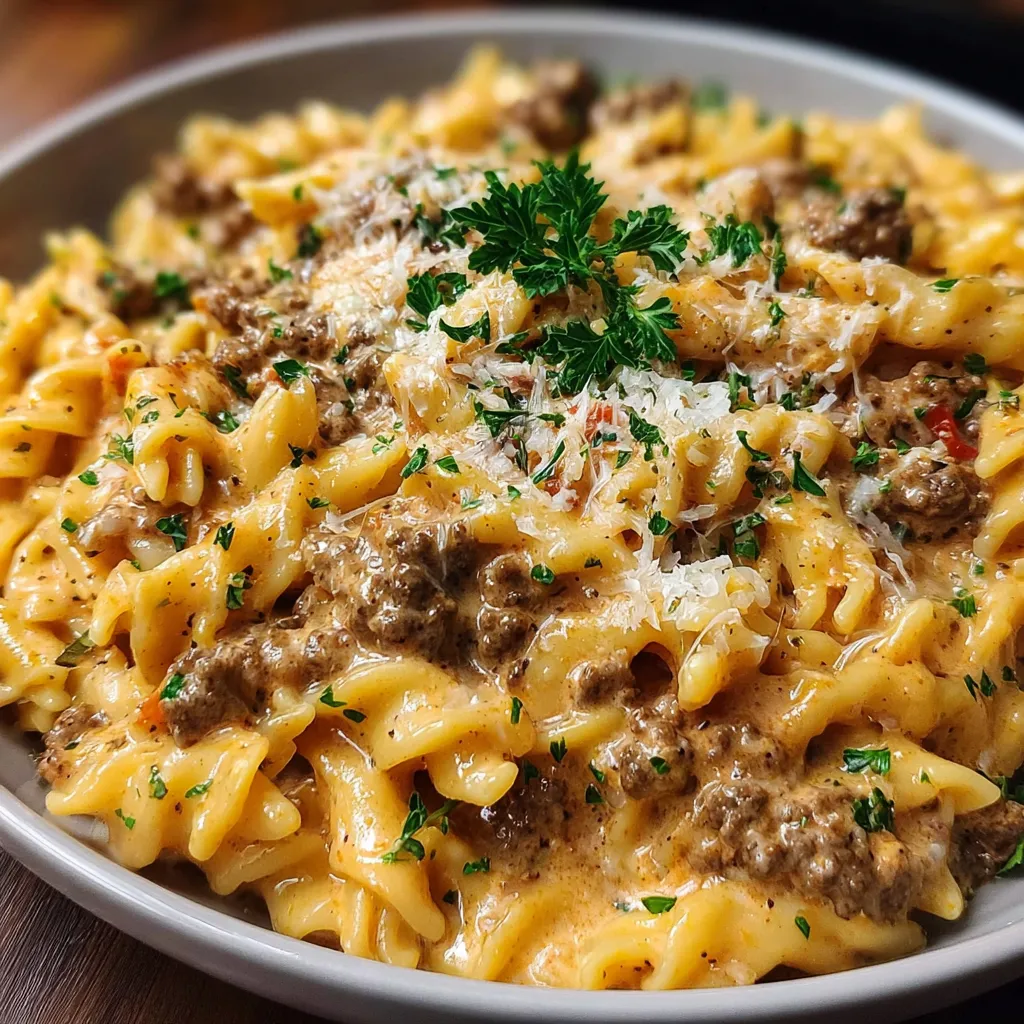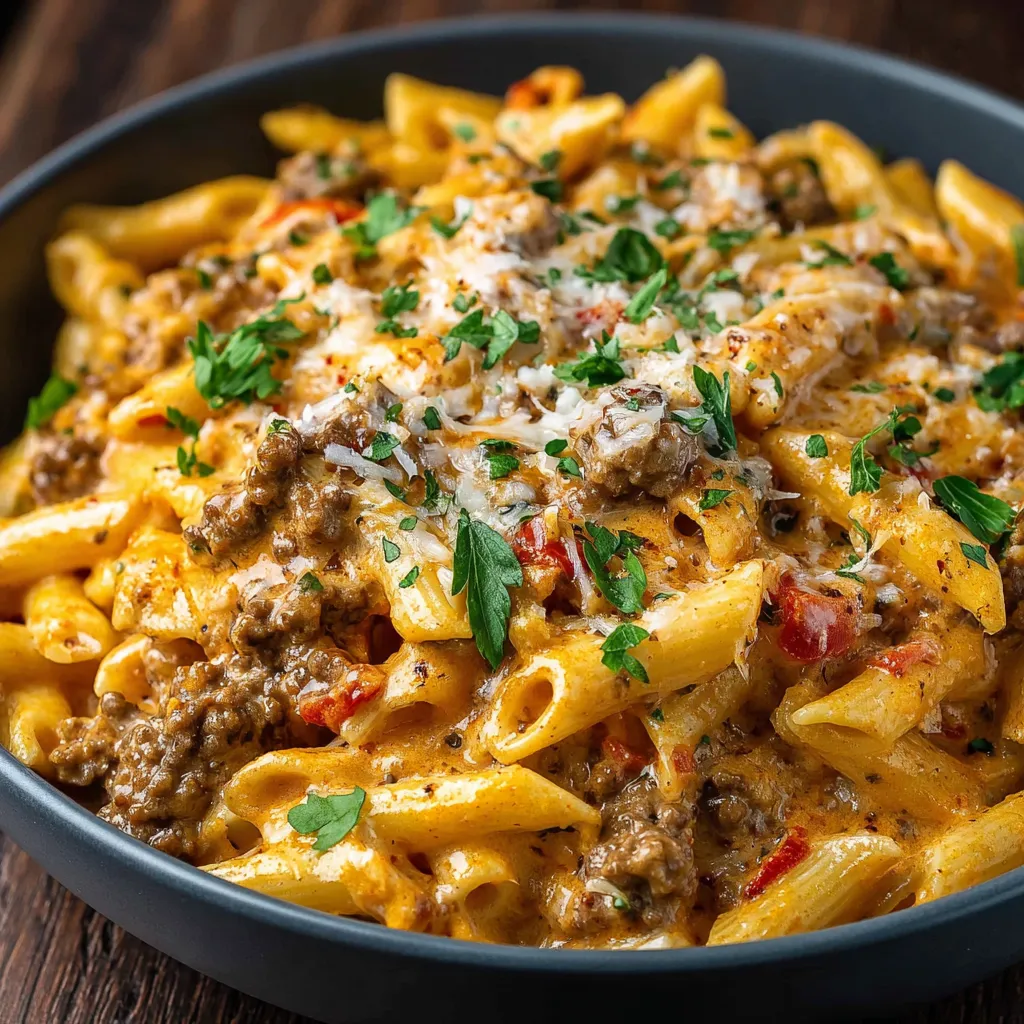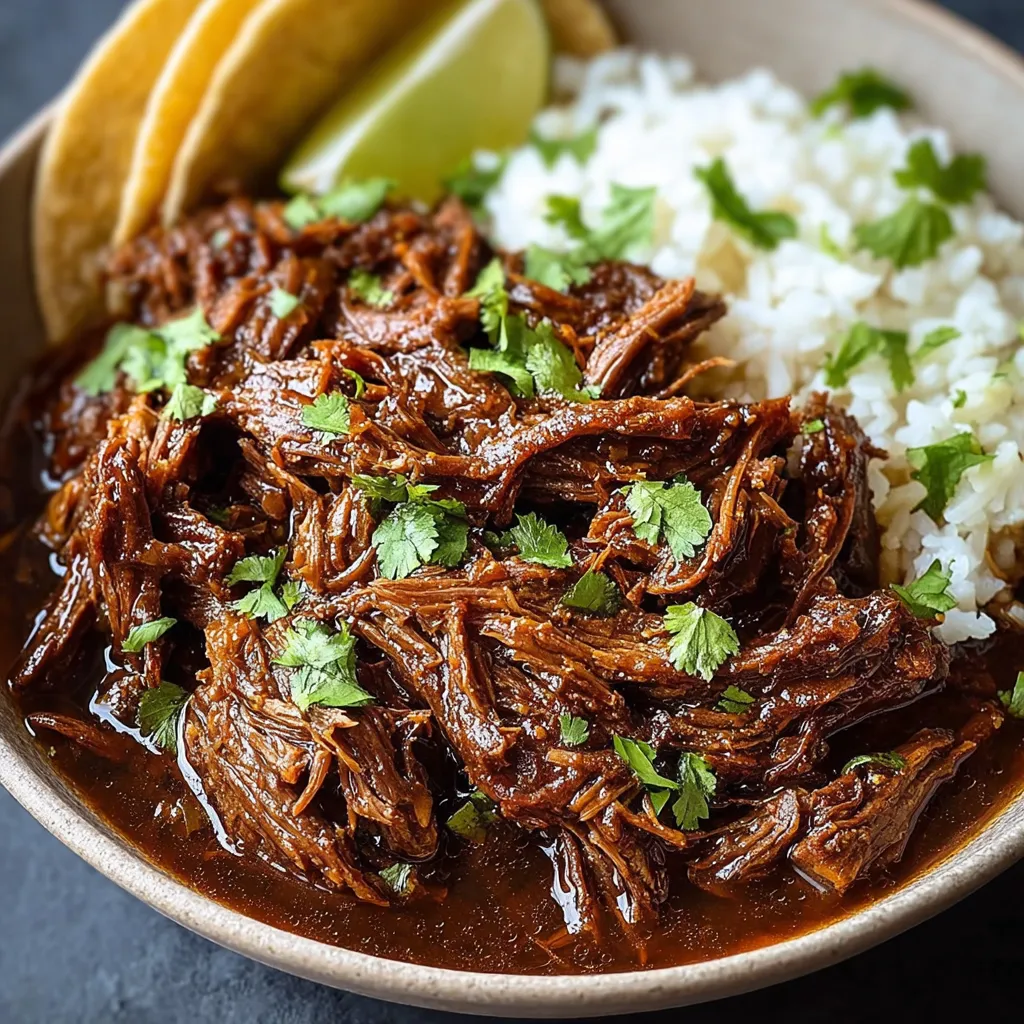I still remember the first time I tried to impress a date by making what I thought was a sophisticated pasta dish, and utterly failing, ending up with a bland, watery sauce and overcooked noodles – a far cry from the comforting, hearty Beef Pasta I craved. But don’t worry, my friend, I’m here to guide you through every step, ensuring that your attempt will be a resounding success, resulting in a dish so delicious, you’ll be making it again and again!
The Ultimate Guide to Delicious Beef Pasta

Alright, let’s talk Beef Pasta. It’s a classic for a reason, right? Hearty, satisfying, and endlessly customizable. But the difference between a mediocre beef pasta and a truly outstanding one lies in the details. We’re going to break down everything, from choosing the right beef to crafting the perfect sauce and cooking the pasta like a pro. Get ready to impress yourself (and anyone else lucky enough to share a plate!).
Choosing Your Beef: Ground, Steak, or Something Else?
The type of beef you choose significantly impacts the final flavor and texture of your pasta. Here’s a quick rundown:
- Ground Beef: This is the most common and budget-friendly option. Opt for a lean ground beef (85/15 or 90/10) to avoid excess grease. If you’re using a fattier ground beef, be sure to drain off the excess fat after browning.
- Steak (Sirloin, Flank, or Skirt): Cutting steak into small pieces or strips adds a richer, more robust flavor and a satisfying chewiness. This is a great way to elevate your beef pasta.
- Stew Meat: While it requires longer cooking, stew meat becomes incredibly tender and flavorful, perfect for a slow-simmered sauce.
- Sausage (Italian or Chorizo): Although it’s not strictly “beef,” adding Italian sausage (sweet or spicy) or chorizo to your beef pasta is a fantastic way to boost the flavor profile.
No matter which beef you choose, make sure it’s fresh and of good quality. Trust your butcher! A good cut of meat will make all the difference.
Building the Perfect Beef Pasta Sauce: Flavor Foundations
The sauce is where the magic happens! A well-developed sauce is the heart and soul of your beef pasta. Let’s explore some flavor-building strategies:
The Aromatic Base: Onions, Garlic, and Beyond
Never underestimate the power of a good aromatic base. Start by sautéing diced onions in olive oil until they’re softened and translucent. Add minced garlic during the last minute or two of cooking, being careful not to burn it. You can also add other aromatics like:
- Carrots and Celery: Diced finely, these add sweetness and depth.
- Bell Peppers: Adds a vibrant sweetness and color.
- Red Pepper Flakes: For a touch of heat.
Tomato Time: Fresh, Canned, or Both?
Tomatoes are the cornerstone of most beef pasta sauces. You have several options:
- Canned Diced Tomatoes: A convenient and reliable choice. Opt for high-quality canned tomatoes for the best flavor.
- Canned Crushed Tomatoes: Creates a smoother, more uniform sauce.
- Canned Tomato Paste: Adds concentrated tomato flavor and richness. A little goes a long way!
- Fresh Tomatoes: If you’re using fresh tomatoes, be sure to peel and seed them first. Roasting them beforehand can intensify their flavor.
I often use a combination of canned diced tomatoes and tomato paste for the best balance of texture and flavor.
The Liquid Component: Broth, Wine, or Water?
Adding a liquid helps to create a luscious sauce and allows the flavors to meld together. Consider these options:
- Beef Broth: Enhances the beefy flavor of the sauce.
- Chicken Broth: A lighter option that adds a subtle sweetness.
- Red Wine: Adds depth, complexity, and acidity. Let it simmer for a few minutes to allow the alcohol to evaporate.
- Water: Works in a pinch, but it won’t add as much flavor as broth or wine.
Sometimes, a splash of cream or half-and-half at the end can add a touch of richness and smoothness.
Seasoning Secrets: Herbs, Spices, and Umami Bombs
Seasoning is crucial for bringing out the flavors of your beef pasta sauce. Here are some essential seasonings:
- Salt and Pepper: The foundation of any good dish. Season generously throughout the cooking process.
- Italian Seasoning: A blend of dried herbs like oregano, basil, thyme, and rosemary.
- Garlic Powder and Onion Powder: Enhance the garlic and onion flavors.
- Bay Leaf: Adds a subtle, aromatic flavor. Remember to remove it before serving!
- Umami Boosters: Ingredients like Worcestershire sauce, soy sauce, or balsamic vinegar can add depth and complexity.
Don’t be afraid to experiment with different herbs and spices to create your own signature flavor! A pinch of smoked paprika or a dash of cayenne pepper can add a surprising twist.
Pasta Perfection: Choosing and Cooking Your Noodles
The right pasta shape can complement the beef and sauce perfectly. Here are some popular choices:
- Penne: Its ridges help to grab onto the sauce.
- Rigatoni: Similar to penne but larger, with deeper ridges.
- Farfalle (Bow Tie): Adds a playful touch.
- Spaghetti or Linguine: Classic choices that pair well with a variety of sauces.
- Orecchiette (Little Ears): Their cupped shape is perfect for catching chunks of beef and sauce.
Cooking Pasta Like a Pro:
- Use plenty of water: At least 6 quarts for every pound of pasta.
- Salt the water generously: This seasons the pasta from the inside out.
- Cook the pasta al dente: It should be firm to the bite, not mushy.
- Reserve some pasta water: The starchy water can be used to adjust the consistency of the sauce.
Bringing It All Together: The Final Assembly
Now for the exciting part: combining the beef, sauce, and pasta! Here’s how to do it:
- Drain the pasta: But don’t rinse it!
- Add the pasta to the sauce: Toss to coat evenly.
- Add a splash of pasta water: If the sauce is too thick.
- Simmer briefly: Allow the pasta to absorb some of the sauce.
Serve immediately, garnished with fresh parsley, grated Parmesan cheese, or a dollop of ricotta cheese.
Variations and Creative Twists
The beauty of beef pasta is its versatility. Here are some ideas to spark your creativity:
- Mushroom Madness: Add sautéed mushrooms (cremini, shiitake, or portobello) to the sauce for an earthy flavor.
- Cheesy Goodness: Stir in some shredded mozzarella, provolone, or fontina cheese for a gooey, cheesy delight.
- Vegetable Power: Add roasted vegetables like zucchini, eggplant, or tomatoes for added nutrients and flavor.
- Spicy Kick: Add a pinch of red pepper flakes or a dash of hot sauce for some heat.
- Creamy Dreamy: Stir in some heavy cream or sour cream for a richer, creamier sauce.
You could even try something completely different and use the beef mixture to create a Philly Cheese Steak Pasta, which offers a delightful spin on two classic dishes. Or, if you’re looking for a hearty and comforting meal, consider a Vegetable Beef Soup, using the same base ingredients but in a soupier format.
Tips and Tricks for Beef Pasta Success
- Don’t overcrowd the pan when browning the beef: Brown it in batches to ensure even browning.
- Deglaze the pan after browning the beef: Use red wine or beef broth to scrape up the browned bits from the bottom of the pan, which add tons of flavor.
- Simmer the sauce for at least 30 minutes: This allows the flavors to meld together and the sauce to thicken.
- Taste and adjust the seasonings as you go: Don’t be afraid to add more salt, pepper, or herbs to suit your taste.
- If the sauce is too acidic, add a pinch of sugar: This will help to balance the flavors.
Troubleshooting Beef Pasta Problems
Even with the best intentions, things can sometimes go wrong. Here are some common problems and how to fix them:
- Sauce is too thin: Simmer the sauce for longer to allow it to reduce and thicken. You can also add a cornstarch slurry (1 tablespoon cornstarch mixed with 2 tablespoons cold water) to thicken it quickly.
- Sauce is too thick: Add more broth or water to thin it out.
- Sauce is too bland: Add more salt, pepper, herbs, or umami boosters like Worcestershire sauce.
- Pasta is overcooked: Unfortunately, there’s no turning back from overcooked pasta. Start over with a fresh batch, being careful not to overcook it this time!
Slow Cooker Option: Set It and Forget It
If you’re short on time, you can easily adapt this recipe for the slow cooker. Brown the beef and sauté the aromatics as directed, then transfer everything to the slow cooker along with the remaining ingredients. Cook on low for 6-8 hours or on high for 3-4 hours. Cook the pasta separately and add it to the slow cooker during the last 30 minutes of cooking time, or serve the sauce over the cooked pasta. For an even richer, slow-cooked flavor, try adapting this method to create a Sunday Slow Cooker Beef Ragu Dinner. The long, slow cooking process will make the beef incredibly tender and flavorful.
Serving Suggestions and Side Dishes
Beef pasta is a complete meal on its own, but it’s even better with a few complementary side dishes:
- Garlic Bread: A classic pairing that’s perfect for soaking up the sauce.
- Green Salad: A light and refreshing salad with a vinaigrette dressing.
- Roasted Vegetables: Broccoli, asparagus, or Brussels sprouts are all great choices.
- Caprese Salad: A simple salad of tomatoes, mozzarella, and basil.
Don’t forget the drinks! A glass of red wine, sparkling water, or iced tea are all great accompaniments.
Beef Pasta: A Recipe to Make Your Own
The most important thing to remember is that this is your beef pasta. Feel free to experiment, adapt, and make it your own! Don’t be afraid to try different types of beef, sauces, and pasta shapes. The possibilities are endless!
For a different take on beef and pasta, consider Ground Beef Gnocchi, which uses pillowy potato dumplings for a delightful texture. Or, if you’re craving something with Asian-inspired flavors, Slow Cooker Korean Beef Noodles could be just what you’re looking for. If you want a simple creamy dish, try this Stovetop Creamy Ground Beef Pasta Dinner.
So, grab your ingredients, put on some music, and get cooking! You’re about to create a beef pasta masterpiece that you’ll be proud to share with family and friends. Happy cooking!
What are some different types of beef that can be used in beef pasta?
You can use ground beef (lean is recommended), steak (such as sirloin, flank, or skirt), or stew meat. Italian sausage or chorizo can also be added for an alternative flavor.
What are some tips for cooking pasta perfectly for beef pasta?
Use plenty of water (6 quarts per pound of pasta), salt the water generously, cook the pasta al dente, and reserve some of the pasta water to adjust the sauce consistency.
What are some ingredients that can boost the umami flavor of the beef pasta sauce?
You can add ingredients like Worcestershire sauce, soy sauce, or balsamic vinegar to the sauce to boost its umami flavor.
What can I do if my beef pasta sauce is too thin?
Simmer the sauce for a longer period to allow it to reduce and thicken. Alternatively, you can add a cornstarch slurry (1 tablespoon cornstarch mixed with 2 tablespoons cold water).

Beef Pasta Ultimate Dinner
Ingredients
Equipment
Method
- Cook pasta according to package directions until al dente. Reserve about 1 cup of pasta water before draining.
- While pasta is cooking, heat olive oil in a large skillet or pot over medium-high heat.
- Add ground beef and cook, breaking it up with a spoon, until browned. Drain off any excess grease.
- Add diced onion and cook until softened, about 5 minutes. Add minced garlic and cook for 1 minute more, until fragrant.
- Stir in crushed tomatoes, diced tomatoes, tomato paste, beef broth, red wine (if using), Italian seasoning, salt, pepper, bay leaf, and Worcestershire sauce (if using).
- Bring the sauce to a simmer, then reduce heat to low, cover, and simmer for at least 30 minutes, or up to 1 hour, stirring occasionally. The longer it simmers, the more the flavors will meld.
- Remove the bay leaf from the sauce.
- Add the drained pasta to the sauce and toss to coat. Add a splash of the reserved pasta water if the sauce is too thick.
- Simmer for a few minutes to allow the pasta to absorb some of the sauce.
- Serve immediately, garnished with fresh parsley and grated Parmesan cheese.




